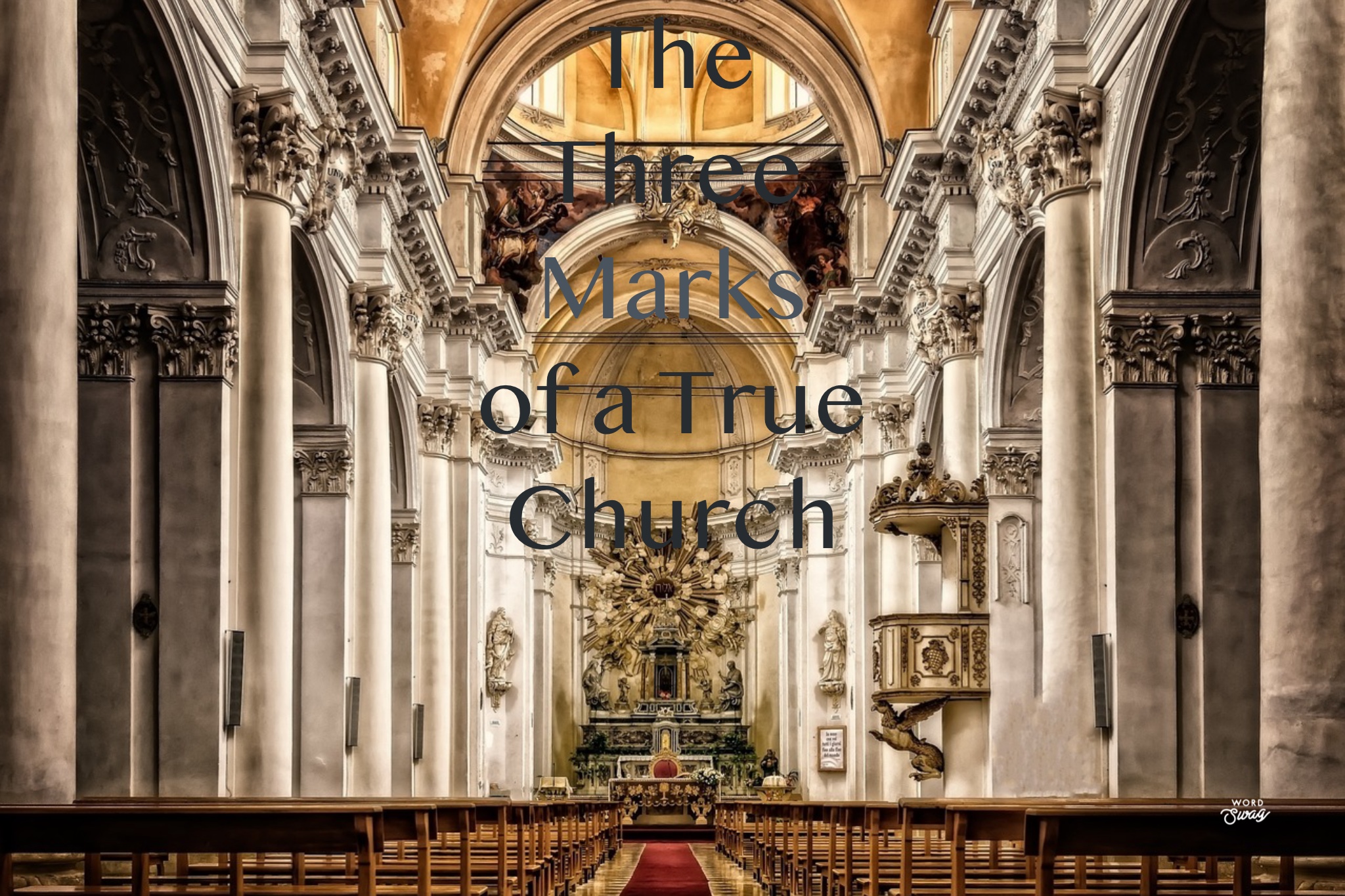How do you know if a church is a true church? As the Reformers were being excommunicated from the Roman Catholic Church in the sixteenth century and having to form their own churches, they developed three distinguishing marks of a true church. The Belgic Confession (a Dutch Reformed confession written in the mid-1500s) summarizes these three marks:
The marks, by which the true Church is known, are these: if the pure doctrine of the gospel is preached therein; if she maintains the pure administration of the sacraments as instituted by Christ; if church discipline is exercised in punishing of sin: in short, if all things are managed according to the pure Word of God, all things contrary thereto rejected, and Jesus Christ acknowledged as the only Head of the Church. Hereby the true Church may certainly be known, from which no man has a right to separate himself. (Article 29)
The right preaching of the Word, the proper administration of the sacraments, and the exercise of church discipline are the triad that marks out true churches.
While I agree whole-heartedly with these marks because they are faithful to the Scriptures, there is another complementary trinity in Colossians 1 that Paul says are sure signs of the Spirit’s work of new creation: faith in Jesus Christ, love for all the saints, and hope in God’s heavenly treasures (Col 1:4-5, 8). Each one dwells within and depends on the others indivisibly.
Christ’s church is not made up of people with a generic faith. “People of faith” in modern parlance can be anything from the Christian faith to people who believe in vague spirituality. The faith that marks out a true church is faith that finds its life in and is directed toward Jesus as the Christ, the Messiah, the King. Faith in Christ is not a mere intellectual assent to facts (though facts about Jesus are vital). Faith is allegiance. (If you want to read more on this, see Matthew Bates’ Salvation by Allegiance Alone.) Faith in Christ Jesus is pledging your fealty to Jesus as Lord. A true church will not say there are equally valid ways of salvation. A true church proclaims the exclusivity of Jesus Christ as the way of salvation. A true church observes all that her Lord commands. This faith is the mark of a true church.
Faith in Christ Jesus is evident in love for one another in the church. Love is a sign of the Spirit’s work (Col 1:8). God the Spirit is a bond-maker, a relationship creator. He is, as Augustine said, the eternal “bond of love” between the Father and the Son. He is the bond between us and the Father, the Son, and one another in the church (Eph 4:3). In creation, the Spirit hovered over the face of the deep and formed and filled the creation so that it was all put together properly and declared “good.” He creates bonds of love and peace.
A true church, a church that is walking in step with the Spirit, is a church whose love is evident. People who don’t love God’s family don’t love God (1Jn 3:14; 4:20). Love is a sign of the Spirit’s creative activity. A true church serves the saints when they are in need. A true church encourages the saints when they are weak and discouraged. A true church rebukes saints when sin threatens to destroy them. A true church is marked out by this kind of love for all the saints.
Love and faith spring from hope in what God has stored up in heaven for us (Col 1:5). Hope is not wishing such as, “I hope the Baltimore Ravens beat the Kansas City Chiefs in the NFC Championship game so that we don’t have to see Taylor Swift at the Superbowl.” That hope is not grounded on anything certain (but is certainly a wish of most of football-watching America). Hope is God’s promised future. Love and faith are rooted in hope because they are rooted in God’s promises. God’s promises take physical form in his Word made flesh, resurrected, ascended, and seated at the right hand of the Father in heaven. He is the literal embodiment of our hope. Because we are in Christ, we share and will one day fully possess the same transformed body and glory of our Lord. He is our hope.
A true church proclaims and lives the hope of the gospel. A true church clings to the hope set before us even as we endure trials. A true church encourages and trains her children to carry on the mission in the next generation. A true church has people who can live and die, not having realized the hope of the gospel completely, because they entrust themselves to the one who fulfills all his promises. A true church can love with abandon, losing its life, because it knows that God will give it all back and more.
Faith in Christ Jesus, love for all the saints, and hope in God’s heavenly treasures are the marks of a true church, a church created and sustained by God’s Spirit.
















Discipline is certainly tied to our ecclesiology: Are you familiar with the Lambeth Quad?
Four marks that were proposed in the late 19th century:
1. The Holy Scriptures of the Old and New Testaments, as “containing all things necessary to
salvation,” and as being the rule and ultimate standard of faith.
2. The Apostles’ Creed, as the Baptismal Symbol; and the Nicene Creed, as the sufficient statement
of the Christian faith.
3. The two Sacraments ordained by Christ Himself–Baptism and the Supper of the Lord–ministered
with unfailing use of Christ’s words of Institution, and of the elements ordained by Him.
4. The Historic Episcopate, locally adapted in the methods of its administration to the varying needs
of the nations and peoples called of God into the Unity of His Church.